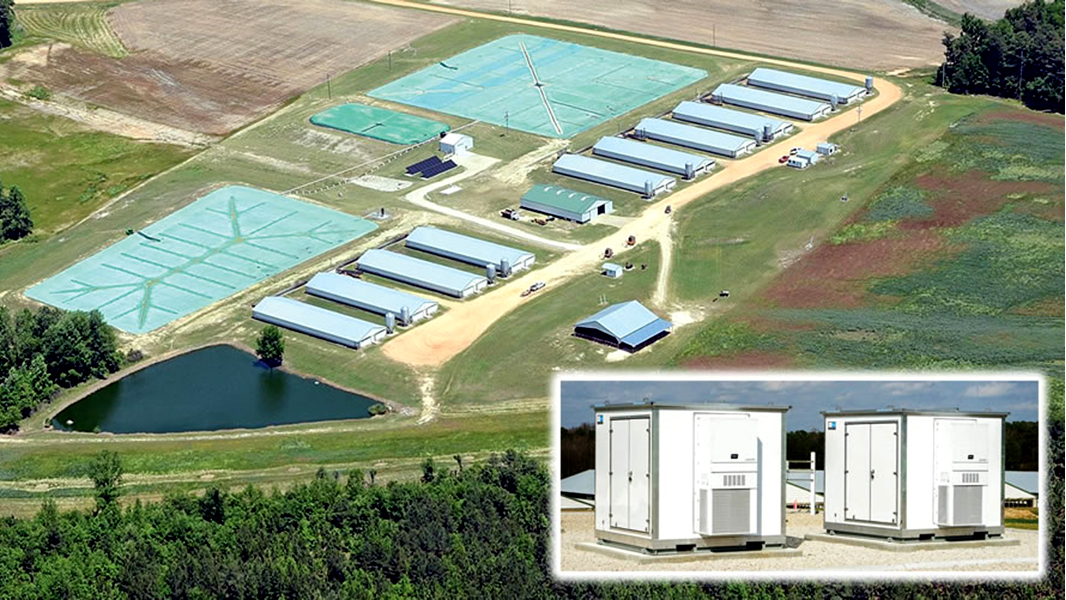Top: Butler Farms in Harnett County, North Carolina treats hog manure in covered lagoon anaerobic digesters. Biogas is utilized in the microgrid (inset) located on the farm.
Development of microgrids got a boost in mid-January when the California Public Utilities Commission (CPUC) announced microgrid rates, tariffs and rules to accelerate deployment of decentralized electricity sources. The CPUC was directed by Senate Bill 1339, enacted in 2018, to undertake a number of activities to further develop policies related to microgrids. Its recent decision is a step in that process and covers the state’s three largest investor-owned utilities — Southern California Edison Company, Pacific Gas and Electric Company, and San Diego Gas & Electric Company. Microgrids, which can be “fueled” by biogas, are decentralized electricity sources that supply power to the main grid when needed, but also operate autonomously if the main grid goes down. They are employed to keep critical services operating, especially when natural disasters such as wildfires force utilities to shut off power during conditions of high wind and high heat to reduce wildfire risk. The CPUC decision also directs the utilities to create a Microgrid Incentive Program, which would fund clean energy microgrids for vulnerable communities impacted by grid outages, notes an article in Utility Dive.
BioCycle has featured microgrids where biogas is part of the energy supply. For example, an electric cooperative in North Carolina, part of NC Electric Cooperatives, initiated a microgrid pilot project with Butler Farms, a hog producer with an anaerobic digester and other innovative waste management practices in Harnett County. The microgrid is designed to improve the reliability of the electric system and farm operations by avoiding prolonged outages after storms or other events that interrupt grid power. The microgrid components at Butler Farms include 20 kW solar panels, a 100-kW diesel generator, a 185-kW biogas generator, a 250 kW/735 kWh battery system, and a controller. The University of California, San Diego has a 42 MW microgrid on its campus that supplies almost all of its electricity load as well as its heating and cooling load. Biogas generated by the Point Loma wastewater treatment plant (WWTP) is conditioned to natural gas pipeline quality and injected into the pipeline as renewable natural gas (RNG). Fossil gas utilized by the UCSD fuel cell is offset by the RNG injected into the pipeline at the WWTP.
“The CPUC’s most recent decision on microgrids allows biogas but does not encourage it over other renewables, even though biogas reduces emissions of the most damaging climate pollutants,” explains Julia Levin, Executive Director of the Bioenergy Association of California. “Microgrids are a huge opportunity for biogas and that biogas — and the hydrogen derived from it — make microgrids a lot more reliable.” Levin notes that the Miramar Naval Air Station in northern San Diego County has a 20 MW microgrid, which includes 3 MW from landfill gas to power essential operations when solar is not available.













